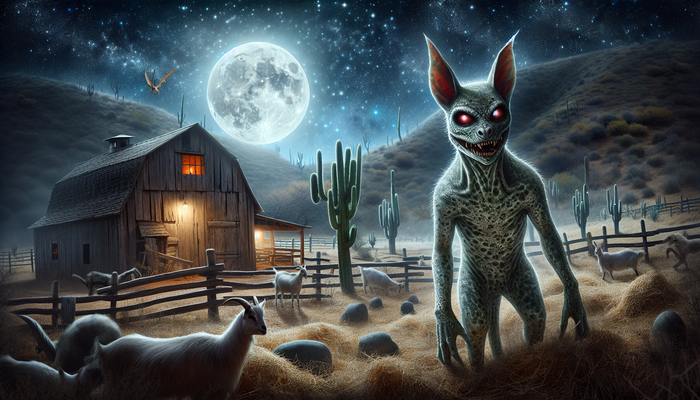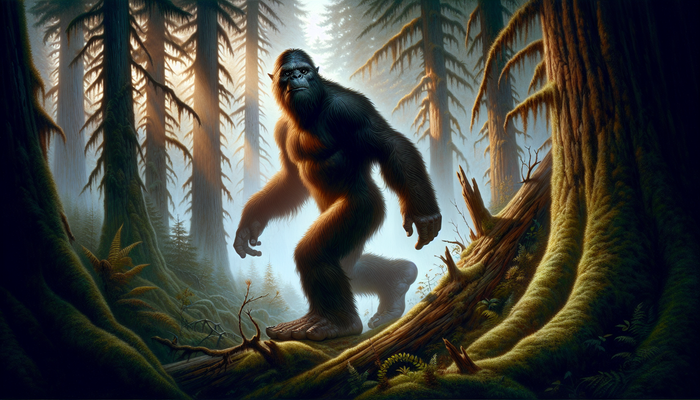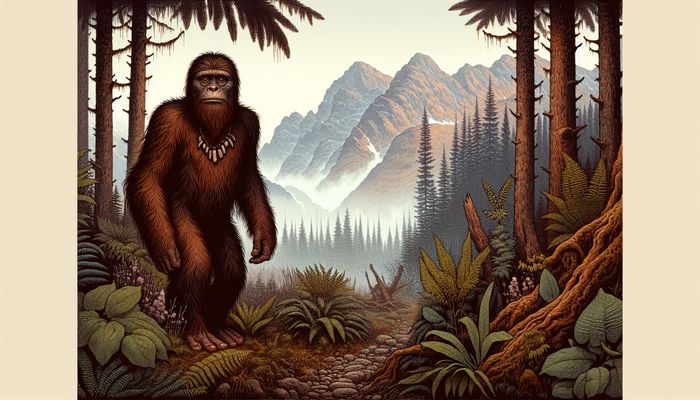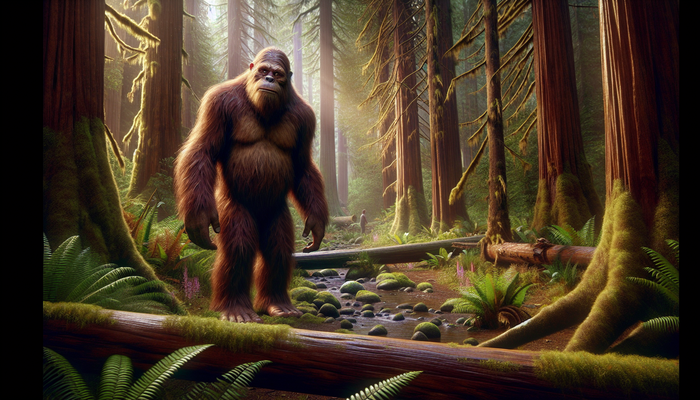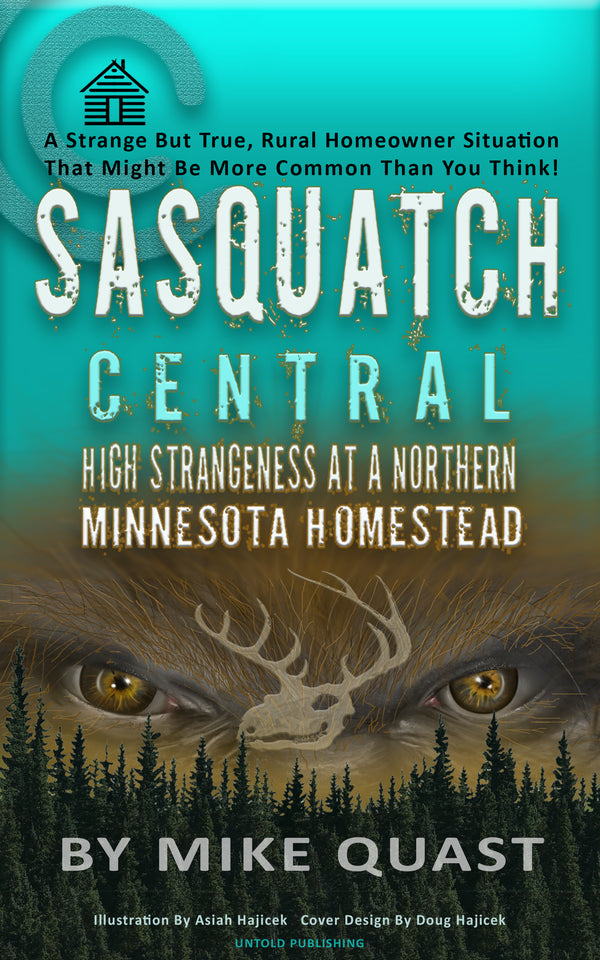Momo, Ozark Howler, and More: Missouri's Legendary Cryptids

By Ava Martinez, Bigfoot Researcher and Teacher
There's something undeniably alluring about the dark woods and winding waterways of Missouri. As the sun dips below the horizon and shadows lengthen, it's easy to imagine that more than just wildlife lurks in the depths of the forest. For generations, tales of mysterious beasts have captured the imaginations of Missourians, weaving themselves into the very fabric of the state's rich folklore. From the infamous Momo the Monster to the elusive Ozark Howler, these legendary cryptids have left an indelible mark on the Show-Me State's cultural identity. Join me as we delve into the fascinating world of Missouri's cryptid lore, exploring the history, mystery, and enduring allure of these fabled creatures.
The Momo Saga: A Monster Comes to Town
Our journey begins in the summer of 1972, in the sleepy town of Louisiana, Missouri. Little did the residents know that their lives were about to be turned upside down by a series of bizarre events that would forever cement their hometown's place in cryptid history.
It all started with a terrified scream from the Harrison family's backyard. Eight-year-old Terry Harrison came running into the house, claiming to have seen a hairy, seven-foot-tall creature with a foul odor lurking near the edge of the woods. His sister Doris, 15, peered out the window and confirmed the sighting, adding that the beast had a "pumpkin-shaped head" and glowing eyes.
Word of the Harrisons' encounter spread like wildfire, and soon, Momo Mania had gripped the town. More eyewitnesses came forward with their own tales of the creature, describing it as anywhere from six to twelve feet tall, with matted fur and an unmistakable stench. Some even claimed that Momo possessed supernatural strength, capable of lifting cars off the ground.
As news of the sightings hit the media, Louisiana found itself at the center of a cryptid frenzy. Monster hunters and curiosity seekers from all over the country descended upon the small town, hoping to catch a glimpse of the elusive beast. Momo quickly became a local celebrity, gracing advertisements and inspiring a rollercoaster at the nearby Six Flags amusement park that would operate for over two decades.
Despite the best efforts of search parties and investigations, no concrete evidence of Momo's existence was ever found. As the summer of '72 drew to a close, sightings of the creature dwindled, and life in Louisiana slowly returned to normal. But the legend of Momo endured, forever etched into the town's history and identity.
Theories about Momo's true nature abound. Some believe the creature was nothing more than a misidentified bear or other known animal, while others suspect it was an elaborate hoax perpetrated by mischievous teenagers. Yet there are those who maintain that Momo could be a genuine cryptid, an undiscovered species that calls the Missouri wilderness home. Regardless of the truth behind the legend, Momo's impact on the public imagination is undeniable, a testament to the enduring power of a good monster story.
The Ozark Howler: Devil in the Dark
Deep in the rugged Ozark Mountains of southern Missouri and northern Arkansas, another legendary beast is said to roam the dense forests and shadowy hollows. Known as the Ozark Howler or the Devil Cat, this creature has been a staple of regional folklore for decades, its eerie cries echoing through the night and chilling the blood of all who hear them.
Descriptions of the Ozark Howler vary, but most accounts agree on a few key details. The creature is often depicted as a massive, black-furred feline, measuring up to six feet in length. Others claim it more closely resembles a bear, with shaggy fur and menacing horns protruding from its head. But perhaps the most unnerving characteristic of the Ozark Howler is its bone-chilling vocalization - a combination of a wolf's howl and an elk's bugle that's been known to induce a profound sense of dread in those unfortunate enough to hear it.
Legends of the Ozark Howler can be traced back to Native American traditions, which spoke of similar creatures stalking the wilderness. However, the first modern reports of the beast emerged in the 1950s, with sightings experiencing a notable uptick between 2005 and 2010. As more eyewitnesses came forward with their encounters, the lore of the Ozark Howler grew, spreading throughout the region and capturing the imaginations of cryptid enthusiasts far and wide.
While no definitive proof of the Ozark Howler's existence has been found, there have been tantalizing clues over the years. Eyewitnesses have reported finding strange, oversized footprints in the mud and stumbling upon the mutilated carcasses of livestock, which some attribute to the creature's predatory nature. As recently as 2022, a man claimed to have spotted a giant black cat he believed to be the Ozark Howler near an abandoned ghost town in Missouri, locking eyes with the beast before it vanished into the forest.
Theories about the Ozark Howler's origins are as varied as the descriptions of its appearance. Some cryptozoologists speculate that the creature could be an undiscovered species of large feline, perhaps a remnant population of prehistoric cats that has managed to evade detection in the remote wilderness. Others lean towards a more supernatural explanation, suggesting that the Ozark Howler might be a descendant of mythical beasts like the Scottish Cu Sith hound, a ghostly entity said to stalk the moors and forests of the British Isles.
Of course, skeptics argue that sightings of the Ozark Howler can be chalked up to misidentifications of known animals, hoaxes, or simply the product of overactive imaginations fueled by the region's rich storytelling tradition. But for those who have encountered the creature firsthand or heard its chilling cries echoing through the night, the Ozark Howler is all too real - a reminder that there are still mysteries lurking in the shadows of the untamed wilderness.
Exploring the Ozark Cryptid Lore
The Ozark Mountains have long been a hotbed of cryptid activity, with tales of mysterious beasts and strange creatures woven into the very fabric of the region's folklore. The rugged, heavily forested landscape and the isolation of many Ozark communities have created the perfect breeding ground for legends to take root and flourish.
One of the most intriguing aspects of Ozark cryptid lore is the sheer variety of creatures said to inhabit the area. In addition to the infamous Ozark Howler, there are stories of aquatic monsters like the Gally Nipper, a giant fish with razor-sharp teeth, and the Gallywampus, a panther-like beast that's equally at home on land or in the water. Some even claim that living dinosaurs might still roam the remote reaches of the Ozarks, hidden from the modern world in the depths of the forest.
Ozark folklore is also rife with tales of oversized animals, from giant birds and snakes to colossal catfish and behemoth bears. These legends often have their roots in Native American traditions or the tall tales of early settlers, but they've taken on a life of their own over the generations, evolving and growing with each retelling.
For many Ozark residents, encounters with these cryptids are more than just campfire stories - they're a very real part of life in the region. Take, for example, the account of a man who, while camping in the Ozarks in the 1980s, found himself surrounded by ape-like creatures that communicated with each other through eerie calls and knocks on the trees. Or the numerous reports of glowing eyes peering out from the darkness, accompanied by foul odors and spine-chilling cries that seem to defy explanation.
What's particularly fascinating about Ozark cryptid lore is the way it blurs the lines between the real and the fantastical. In a region where encounters with wild animals are a common occurrence, it's not hard to see how a glimpse of a mountain lion or a bear in the shadows might be transformed into something more monstrous in the telling. Over time, these stories take on a life of their own, blending fact and fiction until it becomes nearly impossible to separate the two.
The Enduring Allure of Missouri's Cryptids
So what is it about Missouri's legendary beasts that continues to captivate us, even in an age where science has explained so much of the world around us? I believe it comes down to our innate fascination with the unknown and the possibility that there might be something more out there, just beyond the edges of our understanding.
Cryptids like Momo and the Ozark Howler allow us to hold onto a sense of wonder and mystery in an increasingly demystified world. They represent the tantalizing prospect of discovery, the idea that there are still secrets waiting to be uncovered in the wild places of the earth. In a way, these creatures tap into our primal fears and our awe of the untamed wilderness, reminding us of our own smallness in the face of nature's vastness and complexity.
There's also something to be said for the way cryptid legends evolve and take on new life with each generation. As stories are passed down from parent to child, from neighbor to neighbor, they pick up new details and embellishments along the way. A kernel of truth or an actual event might inspire a tall tale, but over time, the lines between memory, myth, and reality start to blur. Sightings and encounters are filtered through the lens of folklore, taking on a dreamlike quality that's hard to pin down but impossible to shake.
For many Missourians, cryptids like Momo and the Ozark Howler have become an integral part of their regional identity and cultural heritage. These legendary beasts are embraced not just as spooky campfire tales, but as a source of local pride and a celebration of the state's rich storytelling tradition. They inspire art and music, attract tourists eager for a brush with the unknown, and bring communities together around a shared sense of wonder and mystery.
At the end of the day, perhaps it doesn't matter whether Momo or the Ozark Howler actually exist in a physical sense. What matters is the power of the stories we tell about them and the way those stories connect us to each other, to the land, and to something larger than ourselves. As long as there are dark forests to explore and questions that remain unanswered, Missouri's cryptids will continue to capture our imaginations, inspiring us to keep searching for the extraordinary in the world around us.
A Final Word
As a biology teacher and amateur cryptozoologist, I've always been fascinated by the way science and folklore intersect in the world of cryptids. While I believe in approaching these legends with a healthy dose of skepticism, I also recognize the value they hold as cultural touchstones and the important role they play in fostering a sense of wonder and appreciation for the natural world.
Missouri's cryptid lore, from the infamous Momo to the elusive Ozark Howler and beyond, is a testament to the enduring power of storytelling and the human imagination. These tales have been passed down through generations, evolving and taking on new life with each retelling. They've left an indelible mark on the state's identity, inspiring art, music, and a shared sense of pride in the rich folklore of the region.
Whether or not you believe in the existence of these legendary beasts, there's no denying the impact they've had on the public consciousness. They remind us that there's still magic and mystery to be found in the world, if only we're willing to look for it. So the next time you find yourself in the wilds of Missouri, keep your eyes peeled and your ears open. You never know what might be lurking just beyond the edge of the campfire light, waiting to be discovered.
From Bigfoot to UFOs: Hangar 1 Publishing Has You Covered!
Explore Untold Stories: Venture into the world of UFOs, cryptids, Bigfoot, and beyond. Every story is a journey into the extraordinary.
Immersive Book Technology: Experience real videos, sights, and sounds within our books. Its not just reading; its an adventure.



